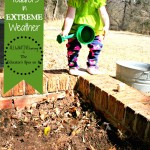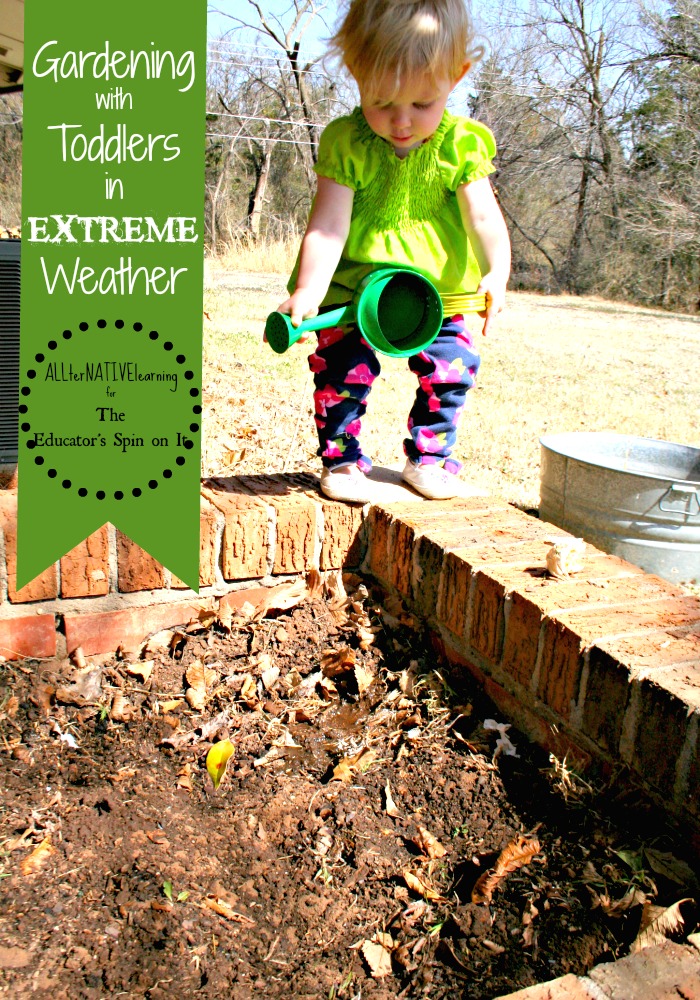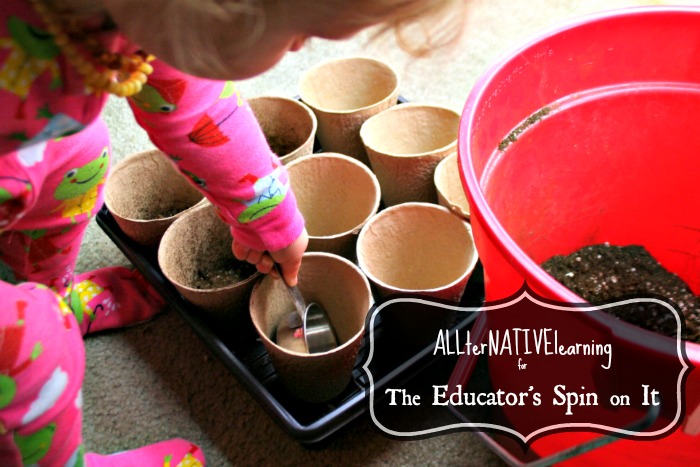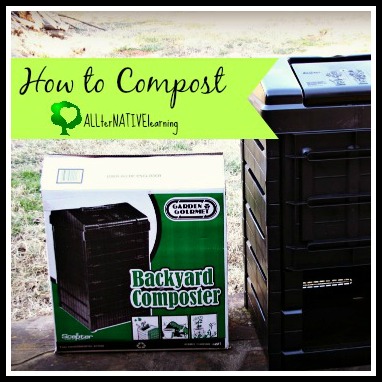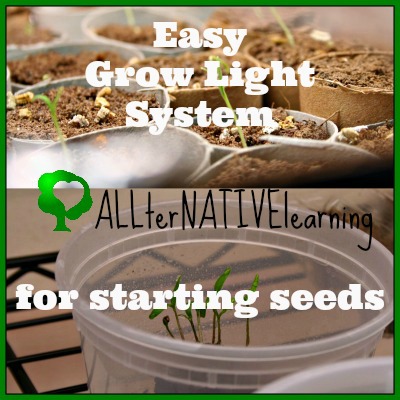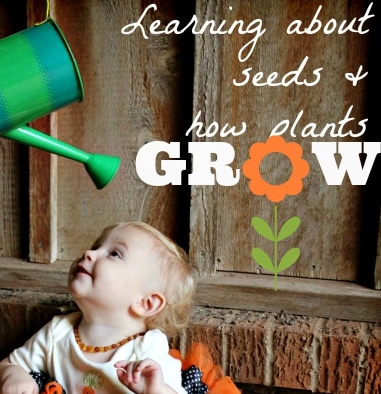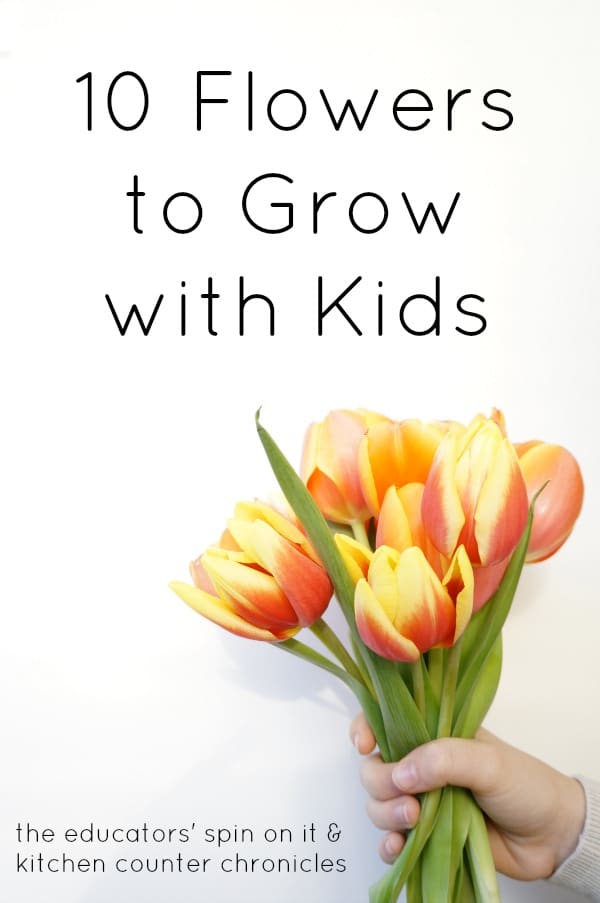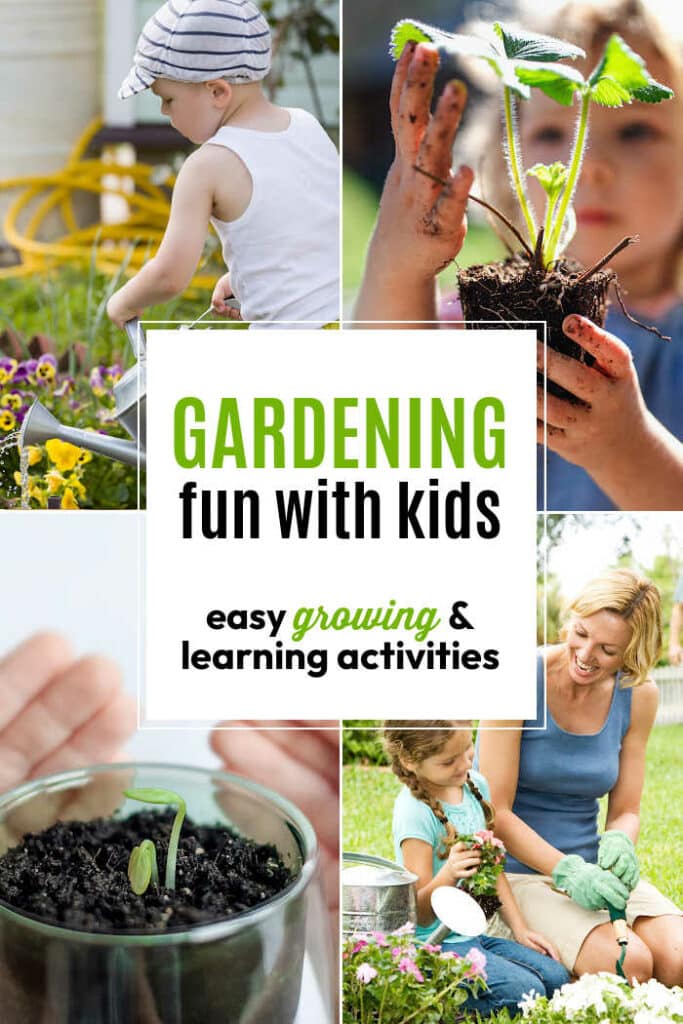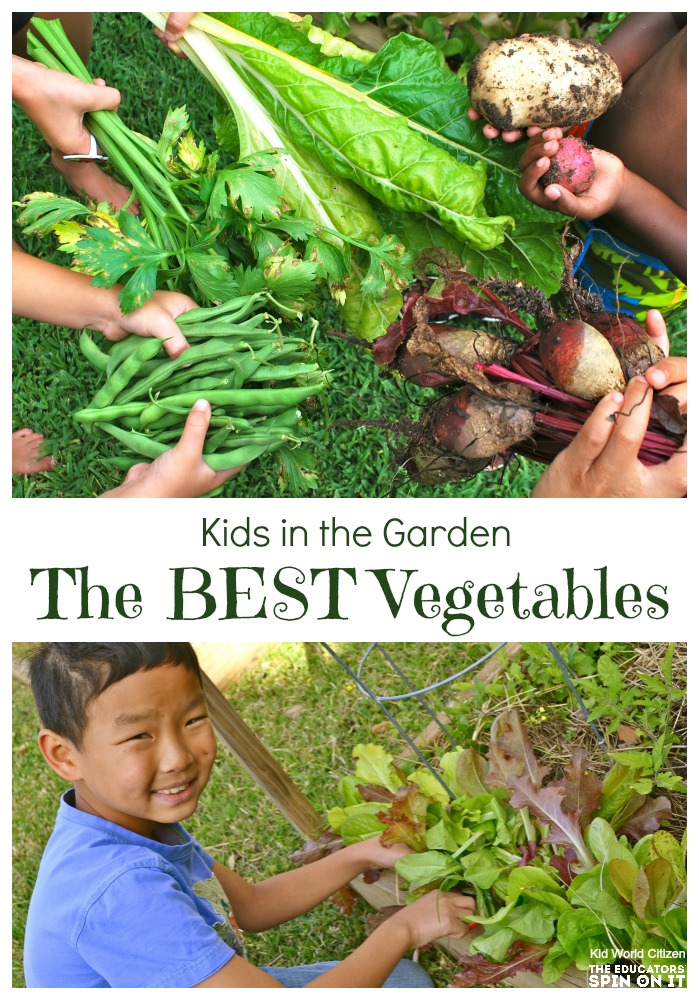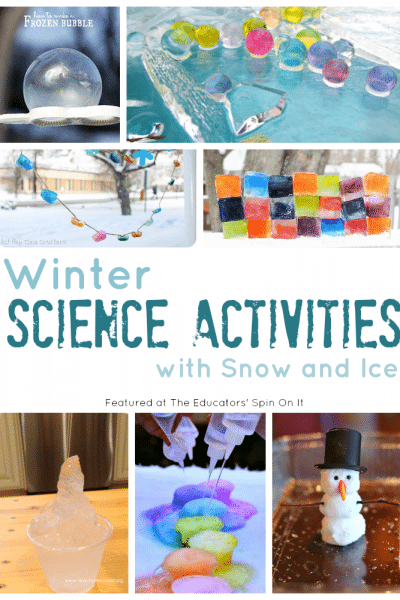Kids are in the Garden; Learning and Growing all around the world. This week, we have learned about growing an Ethiopian Habesha Garden, Cycad plants of South America, crafted by a family from Ecuador, and learned how we can plant our own version of traditional African instruments.
Today, we have Kara, founder of ALLterNATIVElearning.com, here with us to show that gardening is possible in extreme weather. She is raising eco-conscious kids of faith and sharing some of her adventures with you on her site.
Gardening can be difficult as is, but living in Oklahoma we have so much extreme weather that it can be a nightmare. Drought conditions, 113 degree summers, hail, tornadoes, and then extremely freezing weather in the winter makes growing food an endless challenge.
However, it’s not impossible and still such a fun activity to do with toddlers and kids throughout the year.
How we Start Seeds in Extreme Temperatures
Whereas some places can plant most of their seeds directly in the ground and do it it March and April, we unfortunately have been known to have snow storms through March and even had snow on the ground at the beginning of May last year. This means that for us, we have to start a lot of seeds indoors because they cannot handle such high and low extremes from day to day.
Starting seeds indoors is also one of the best ways to get my toddler involved. She can easily help me scoop soil and vermiculite into seed starting pots and use a spray bottle to water each plant in the mornings. We have had great success over the past couple of years sprouting our seeds for transplants.
Keeping Plants Alive Through Heat & Drought
Oklahoma City has been known to have 50+ days over 100 degrees in the summertime. We have even experienced a severe drought for a few years now and are home to the dust bowl of the Great Depression. The track record of our state makes maintaining plant growth difficult.
Some of the ways we have achieved the best results are as follows:
- Using containers and raised beds. While these typically have great drainage associated with the, they also tend to hold onto water well. Drought conditions cause water to erode the soil and not absorb properly.
- Cultivate my own soil. Regardless of my climate, Oklahoma has rocky, red dirt that is high in calcium and is fairly acidic. Rather than plant directly into that, we either utilize our local university’s services to get a soil sample to save gardening headaches or we just bring in soil that is already prepped.
- Water plants in the morning. Not only does this mean rising together as a family to do chores, it means giving our plants their best bet at surviving. They have hydration in the hot sun, but are not turning yellow from over watering. Plants like tomatoes need lots of water and the replenish at night. Therefore, watering in the evening can cause them to burst.
Learning from our Mistakes in Garden
We also keep a journal of what we do each year. We include drawings, time tables, watering times, weather information an more. This allows us to adjust the next year. Some plants are more finicky than others and last year we lost thousands of seedlings at one point. That’s when we just grow what we have and learn to do better the next year!
Kara is the founder of ALLterNATIVElearning.com. She is a tot schooler and is passionate about living a natural, “leave no trace” lifestyle while raising her children to be eco-conscious. You can find her on FB, G+, Pinterest, and other social media outlets.
You may also be interested in her articles:
Gardening with kids is a great learning opportunity to teach math, science, social studies, reading, writing and social skills. We often underestimate the power of a garden as an educational tool. Here at The Educators’ Spin On It, we strongly urge parents and teachers to PLANT A SEED with your child and watch them grow.
For 50+ gardening tips and activities to do with your children, click here.
